Mercedes EQS vs Volvo EX90 - Differences and prices compared
Costs and Efficiency:
When it comes to price and running costs, the biggest differences usually appear. This is often where you see which car fits your budget better in the long run.
Volvo EX90 has a evident advantage in terms of price – it starts at 73700 £, while the Mercedes EQS costs 93900 £. That’s a price difference of around 20195 £.
In terms of energy consumption, the advantage goes to the Mercedes EQS: with 16.50 kWh per 100 km, it’s slight more efficient than the Volvo EX90 with 17.80 kWh. That’s a difference of about 1.30 kWh.
As for range, the Mercedes EQS performs distinct better – achieving up to 816 km, about 196 km more than the Volvo EX90.
Engine and Performance:
Power, torque and acceleration are the classic benchmarks for car enthusiasts – and here, some clear differences start to show.
When it comes to engine power, the Volvo EX90 has a to a small extent edge – offering 680 HP compared to 544 HP. That’s roughly 136 HP more horsepower.
In acceleration from 0 to 100 km/h, the Volvo EX90 is minimal quicker – completing the sprint in 4.20 s, while the Mercedes EQS takes 4.40 s. That’s about 0.20 s faster.
In terms of top speed, the Mercedes EQS performs to a small extent better – reaching 210 km/h, while the Volvo EX90 tops out at 180 km/h. The difference is around 30 km/h.
There’s also a difference in torque: Volvo EX90 pulls hardly perceptible stronger with 870 Nm compared to 858 Nm. That’s about 12 Nm difference.
Space and Everyday Use:
Whether family car or daily driver – which one offers more room, flexibility and comfort?
Seats: Volvo EX90 offers distinct more seating capacity – 7 vs 5.
In curb weight, Mercedes EQS is hardly perceptible lighter – 2545 kg compared to 2556 kg. The difference is around 11 kg.
In terms of boot space, the Mercedes EQS offers decisively more room – 610 L compared to 324 L. That’s a difference of about 286 L.
In maximum load capacity, the Volvo EX90 performs to a small extent better – up to 2135 L, which is about 365 L more than the Mercedes EQS.
When it comes to payload, Volvo EX90 minimal takes the win – 585 kg compared to 565 kg. That’s a difference of about 20 kg.
Who wins the race?
The Volvo EX90 proves to be has a very small edge and therefore becomes our DriveDuel Champion!
Volvo EX90 is the better all-rounder in this comparison.
 @ Volvo Cars
@ Volvo Cars
Volvo EX90
Costs and Consumption
View detailed analysis
Engine and Performance
View detailed analysis
Dimensions and Body
View detailed analysis
Mercedes EQS
The Mercedes EQS is a silent, spaceship-like flagship that turns electric luxury into zen on wheels, wrapped in a swooping design that insists on being admired. Inside it’s all glassy screens and soft-touch surfaces that make long trips feel like first class, and the driving experience is composed and effortless — like a courteous butler with an electric heart.
details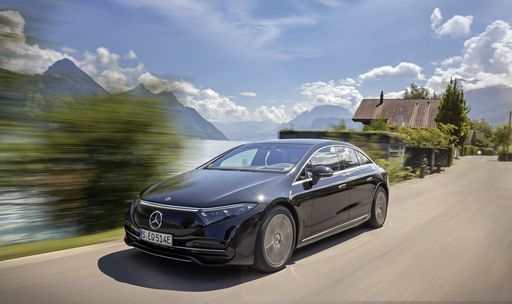 @ Mercedes-Benz Group Media
@ Mercedes-Benz Group Media
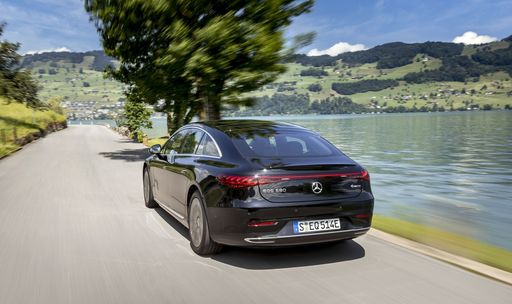 @ Mercedes-Benz Group Media
@ Mercedes-Benz Group Media
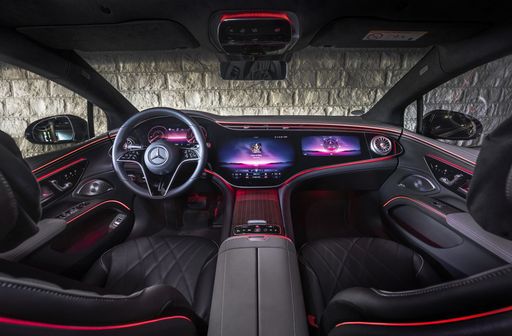 @ Mercedes-Benz Group Media
@ Mercedes-Benz Group Media
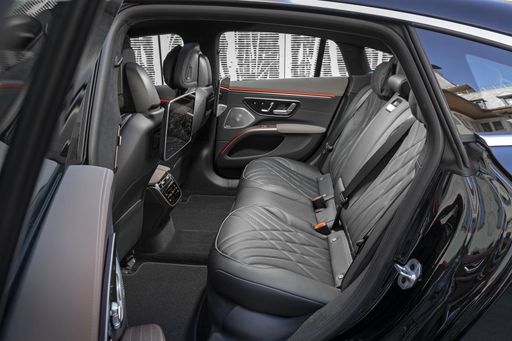 @ Mercedes-Benz Group Media
@ Mercedes-Benz Group Media
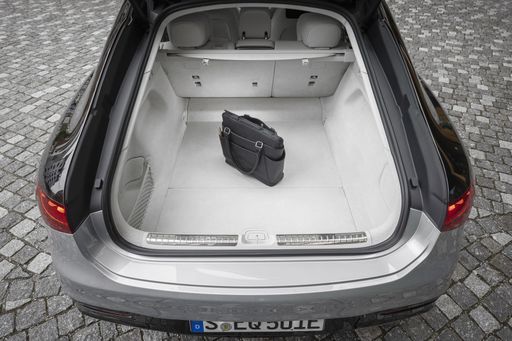 @ Mercedes-Benz Group Media
@ Mercedes-Benz Group Media
Volvo EX90
The Volvo EX90 feels like a Scandinavian fortress on wheels, combining serene luxury with smart safety features that make everyday driving remarkably calm and confident. It dresses cutting-edge electric technology in understated elegance, so buyers who want peace of mind without shouting about it will find it hard to resist.
details @ Volvo Cars
@ Volvo Cars
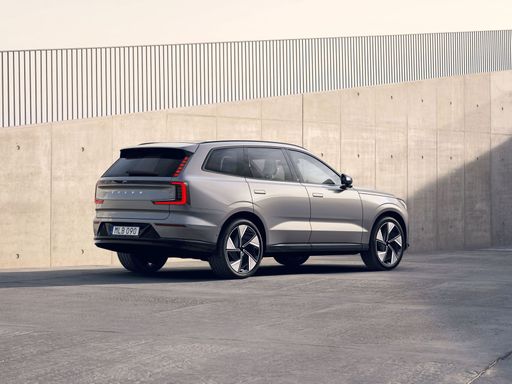 @ Volvo Cars
@ Volvo Cars
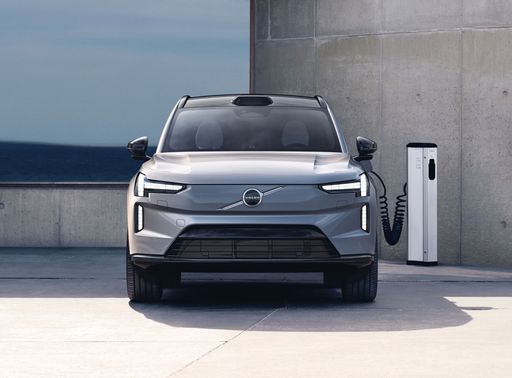 @ Volvo Cars
@ Volvo Cars
 @ Volvo Cars
@ Volvo Cars
 @ Volvo Cars
@ Volvo Cars
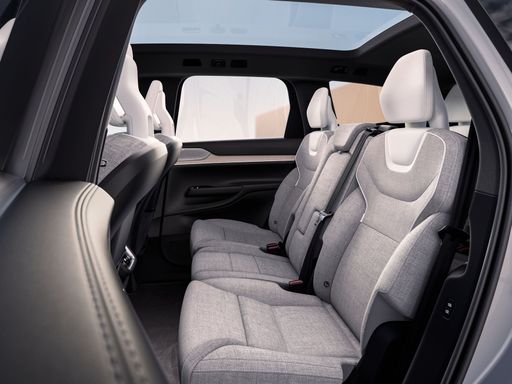 @ Volvo Cars
@ Volvo Cars
 @ Mercedes-Benz Group Media
@ Mercedes-Benz Group Media
|
 @ Volvo Cars
@ Volvo Cars
|
|
|
|
Costs and Consumption |
|
|---|---|
|
Price
93900 - 123500 £
|
Price
73700 - 94100 £
|
|
Consumption L/100km
-
|
Consumption L/100km
-
|
|
Consumption kWh/100km
16.5 - 17.2 kWh
|
Consumption kWh/100km
17.8 - 19.3 kWh
|
|
Electric Range
790 - 816 km
|
Electric Range
570 - 620 km
|
|
Battery Capacity
118 kWh
|
Battery Capacity
88 - 102 kWh
|
|
co2
0 g/km
|
co2
0 g/km
|
|
Fuel tank capacity
-
|
Fuel tank capacity
-
|
Dimensions and Body |
|
|---|---|
|
Body Type
Hatchback
|
Body Type
SUV
|
|
Seats
5
|
Seats
6 - 7
|
|
Doors
5
|
Doors
5
|
|
Curb weight
2545 - 2655 kg
|
Curb weight
2556 - 2764 kg
|
|
Trunk capacity
610 L
|
Trunk capacity
324 L
|
|
Length
5223 mm
|
Length
5037 mm
|
|
Width
1926 mm
|
Width
1964 mm
|
|
Height
1512 mm
|
Height
1744 mm
|
|
Max trunk capacity
1770 L
|
Max trunk capacity
2082 - 2135 L
|
|
Payload
550 - 565 kg
|
Payload
375 - 585 kg
|
Engine and Performance |
|
|---|---|
|
Engine Type
Electric
|
Engine Type
Electric
|
|
Transmission
Automatic
|
Transmission
Automatic
|
|
Transmission Detail
Reduction Gearbox
|
Transmission Detail
Reduction Gearbox
|
|
Drive Type
All-Wheel Drive, Rear-Wheel Drive
|
Drive Type
Rear-Wheel Drive, All-Wheel Drive
|
|
Power HP
360 - 544 HP
|
Power HP
333 - 680 HP
|
|
Acceleration 0-100km/h
4.4 - 6.2 s
|
Acceleration 0-100km/h
4.2 - 6.8 s
|
|
Max Speed
210 km/h
|
Max Speed
180 km/h
|
|
Torque
568 - 858 Nm
|
Torque
480 - 870 Nm
|
|
Number of Cylinders
-
|
Number of Cylinders
-
|
|
Power kW
265 - 400 kW
|
Power kW
245 - 500 kW
|
|
Engine capacity
-
|
Engine capacity
-
|
General |
|
|---|---|
|
Model Year
2024
|
Model Year
2025
|
|
CO2 Efficiency Class
A
|
CO2 Efficiency Class
A
|
|
Brand
Mercedes-Benz
|
Brand
Volvo
|
What drivetrain options does the Mercedes EQS have?
Available configurations include All-Wheel Drive or Rear-Wheel Drive.
The prices and data displayed are estimates based on German list prices and may vary by country. This information is not legally binding.
